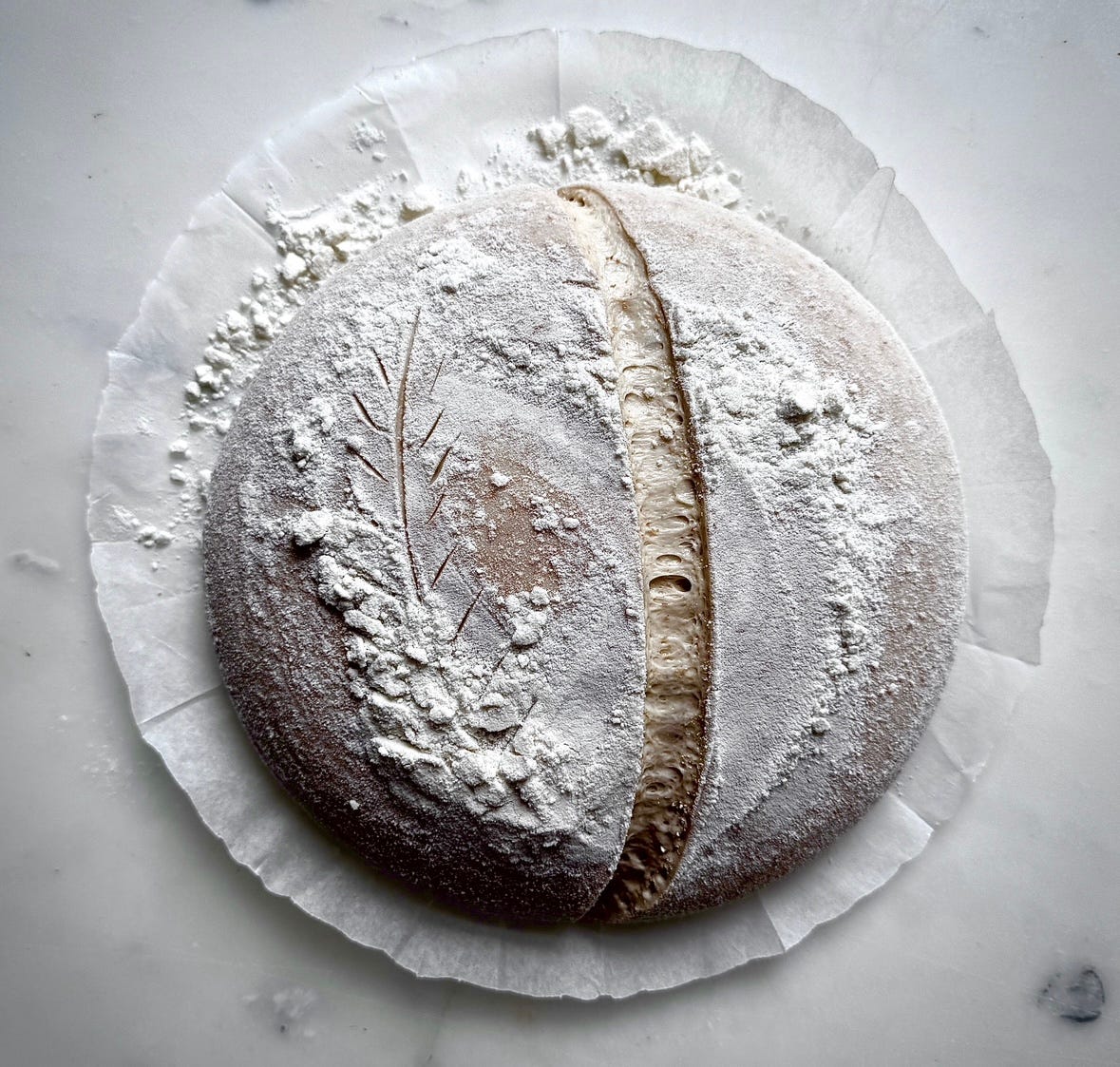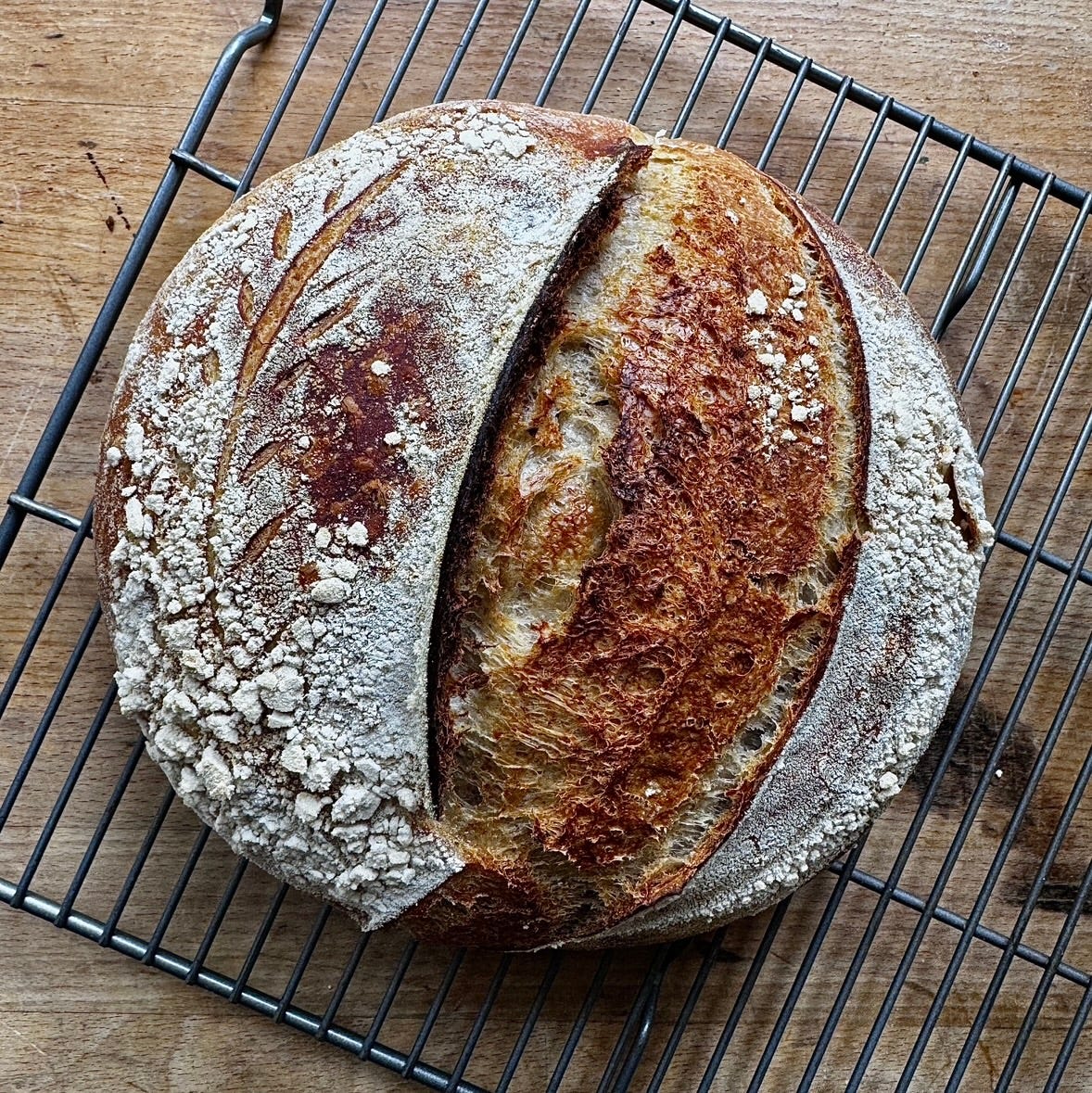Sourdough - a tutorial
Part One. A wild honey ferment
‘Acorns were good until bread was found’.
Francis Bacon 1561 - 1626
If I may take this opportunity, I wish all those of you who read these words in the United States a very Happy Thanksgiving. I shall be joining you this week in roasting a large turkey with all the trimmings, though I must say I’m unable to bring myself to melt marshmallows on top of sweet potatoes. It makes my teeth squeak even thinking about it.
And as it’s the festive season, here’s a discount for all new subscriptions
West Berkshire, November 2024
Sourdough
I certainly don’t profess to be any kind of expert in sourdough making, but I can tell you that the method below makes the beginnings of a very fine loaf of bread.
I bake sourdough loaves most days. Dark crusted bread, blistered, imprinted with the white floured concentric rings from the cane-hooped bannetons in which the bread rests overnight. Dark rye, spelt, poppy seeds and San Francisco-style boules and bâtards slashed deep with a razor blade to allow good spring in the oven. I like mine with a dark crust, the flavour is fuller and more developed, nutty, bitter and caramel-tasting. I often leave them in the oven a little longer than I should in the eternal quest for the perfectly burnt crust.
I relish all the rituals of breadmaking.
I find the whole process calming, despite the many vagaries of handling sourdough successfully and often being against the clock.
My therapy I believe.
Opening my pot of ferment, using my dough scraper to remove a thick gloopy chunk, dropping it with a plop into a large, wide ceramic bowl on the scales. Mixing this stringy, living starter with water then mixing in the flours with the curved edge of the scraper to begin the familiar story of flour, water and salt being turned into bread.
I love the feel of the wet dough on the bench. The way it responds to being flipped, folded and pulled. The change in structure when the salt is added to the mixture, so sticky but not really.
Beginning with a bowlful of what in reality is mostly a wet, tacky mess of water, flour salt and ferment, that at first wants to glue itself to everything it touches, then through time and correct handling using Richard Bertinet’s method of coaxing high hydration doughs to a perfect shape, the dough finally turns into a dry taught ball.
I love the feel of the gloopy mix in my hands, stretching and folding it over to create the structure. The pinching and tucking of the seams to make the final shape and then pulling the tight ball of living soft dough across the wooden bench to create the surface tension needed to keep the loaf’s shape during the bake is incredibly satisfying.
However, we must first start with the fermentation.
Part One, if you like.
In Part Two I will explain how to make the loaves.
That will be in one week when your Wild honey ferment is ready.
Onwards




